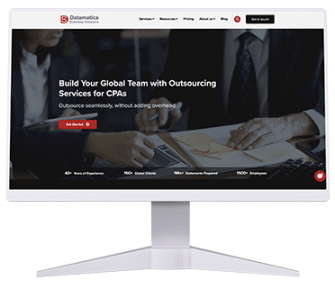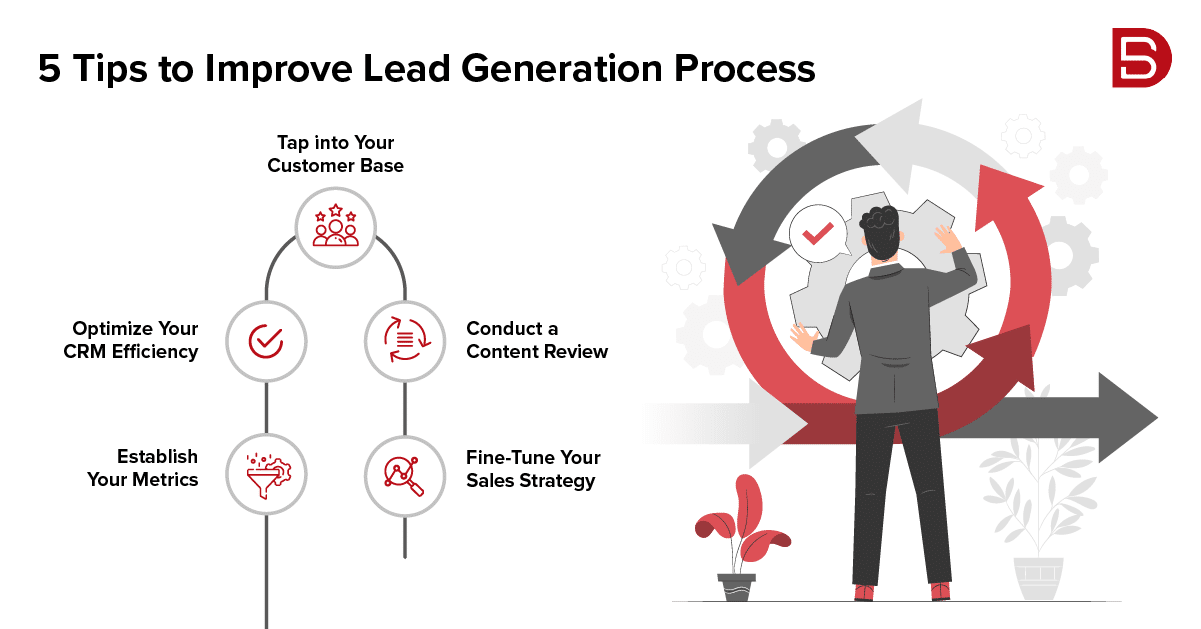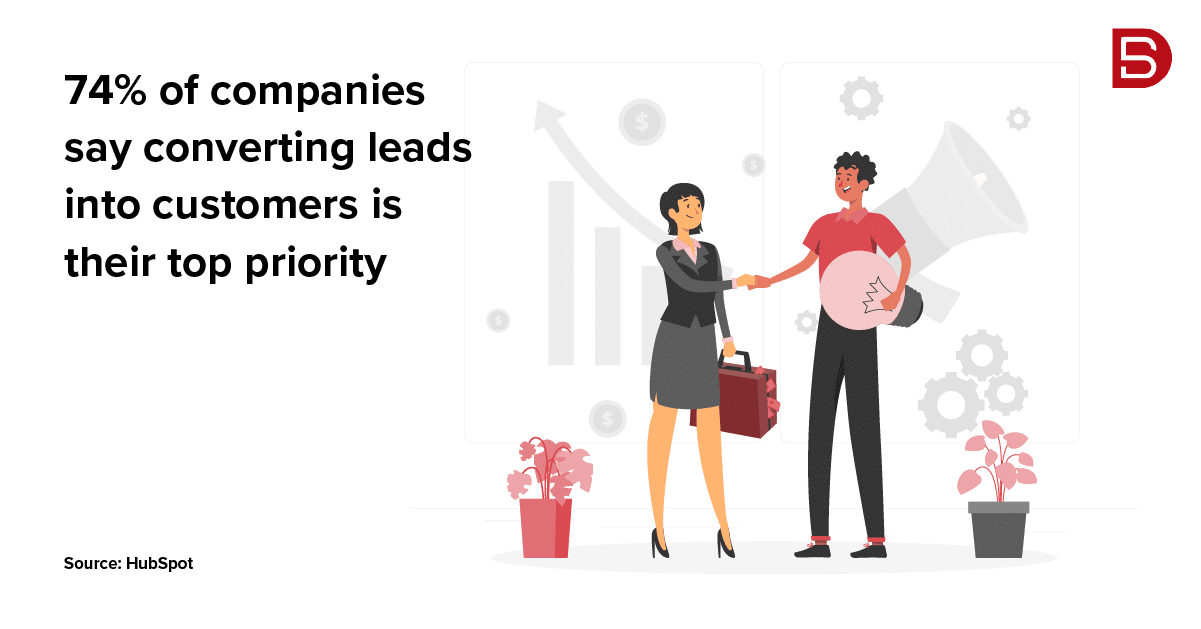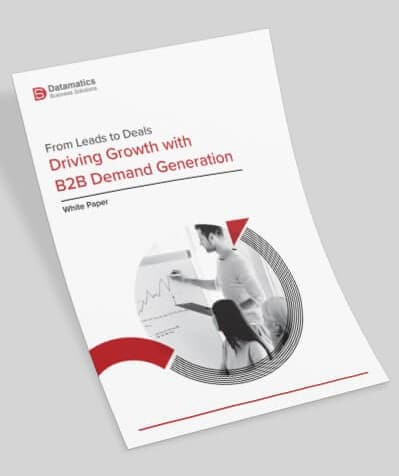Back in the day, lead generation was a simpler game. We had fewer tools and tricks up our sleeves. But now, thanks to the internet and social media, things have gotten a bit more complicated in the digital age.
When you search for “B2B lead generation” today, you’re bombarded with tons of advice and resources on how to attract and convert leads into loyal customers. Yet, despite all this information, many marketers still find lead generation to be their biggest headache, with 61% feeling the heat.
So, how do we navigate this ever-changing landscape? In this blog, we explore key practical tips and strategies for optimizing and improving your lead generation process and steering your business toward success. So, let’s get started.
From Leads to Sales: 5 Proven Methods to Enhance Your Lead Generation Process
Generating a good number of leads is great. But let’s face it, until we convert them into sales, they’re not doing much for us. That’s why fine-tuning your process to turn those leads into loyal customers is critical. Here are five simple strategies to make sure you’re getting the most out of your lead generation efforts:
1. Establish Your Metrics
You can’t improve what you don’t measure. To enhance your lead generation performance, you need to track key metrics. Here are a few to consider:
• Customer Acquisition Cost (CAC)
CAC reveals how much it costs to acquire a single new customer. It’s calculated by dividing the total amount spent on acquiring customers by the number of new customers obtained in the same period. For example, if you spend $1,000 and gain 10 new customers, your CAC would be $100. Keeping a close eye on this metric helps you assess the effectiveness of your marketing channels.
• Cost Per Acquisition (CPA)
CPA measures the expense incurred to secure any type of conversion, such as eBook downloads, consultations, or free trials. You determine what constitutes a conversion. As a general formula, divide the amount spent on acquiring new leads within a specific timeframe by the number of new leads obtained during that period.
• Customer Lifetime Value
In addition to the CAC metric, it’s valuable to understand how much an average customer contributes to your business over their lifetime. For instance, if your CAC is $100, but the average customer is only worth $75, that’s not great. However, if each customer is worth $1,000, you’re in fantastic shape.
• Cost Per Lead by Marketing Channel
Not every marketing channel delivers the same bang for your buck. Costs vary, and naturally, you’ll want to focus on the channels that bring in the most affordable and high-quality leads. Without carefully tracking this metric, you’re guessing which channels offer the best returns.
Setting up systems to track these metrics requires some upfront effort. However, once they’re up and running smoothly, you can simply keep an eye on the numbers and base your marketing decisions on solid, reliable data.
2. Optimize Your CRM Efficiency
For this pointer, we’re assuming you’re already using a customer relationship management (CRM) tool, if not, it’s high time to jump on board. A top-notch CRM offers numerous benefits over managing leads and customer interactions with spreadsheets or old-school pen and paper.
Even if you’re already using a CRM, chances are you’re not squeezing every drop of potential from it. Most CRMs are packed with powerful features just waiting to be unleashed. Here’s how to get the most out of your CRM:
- Streamline Inbound Lead Qualification: Automate the process so your sales team focuses solely on leads with serious sales potential. Identify key data points and factors that distinguish promising leads from the rest.
- Automate Lead Handoff: Use your CRM to automate the transfer of new leads from marketing to sales, ensuring a smooth handover and minimizing delays.
- Review Past Leads: Take a trip down memory lane and review old leads to uncover missed opportunities. Your CRM holds valuable insights that can inform future strategies.
A good CRM is a timesaving, stress-reducing powerhouse. Get it firing on all cylinders to ensure no valuable leads slip through the cracks.
3. Tap into Your Customer Base
Your current customers are a valuable resource that can supercharge your lead generation efforts in three key ways:
• Referral Programs
Encourage satisfied customers to spread the word about your business by offering them rewards or discounts for referring new leads.
• Reengagement Campaigns
When faced with challenges like a downturn in the market or limited marketing resources, don’t overlook the potential of reconnecting with your existing customer base. Send targeted emails or messages to customers who haven’t engaged with your brand in a while, offering them incentives to return, such as exclusive discounts or access to new features.
• Upselling and Cross-selling
Maximize the value of your existing customer relationships by identifying opportunities to upsell or cross-sell additional products or services. Tailor your offers based on their past purchases or interactions to provide personalized recommendations and drive repeat business.
4. Conduct a Content Review
Aside from technical aspects like page speed and tracking, it’s crucial to conduct a thorough review of your lead magnets and CTAs, the materials that drive lead generation.
Here’s what to look for:
• Consistency
While you’re intimately familiar with your products or services, it’s easy to assume potential customers know just as much. However, that’s often not the case. Ensure your marketing content consistently covers key points about what your offerings do, why they’re valuable, and what sets them apart in the market.
• Appeal
Are you effectively communicating the most compelling features and benefits of your offerings? Ensure your content highlights what makes your products or services irresistible to your target audience.
• Keywords
Is your language aligned with the terms your ideal customers use to search for solutions to their problems? Conduct thorough keyword research and tailor your content to target different keywords for different buyer personas.
• Headlines
Your headlines serve as the advertisement for your content. Whether it’s ad headlines, blog post titles, or email subject lines, ensure they’re captivating, easy to digest, and clearly communicate your content’s value.
5. Fine-Tune Your Sales Strategy
Securing leads is just the beginning; the real payoff comes from converting those leads into paying customers. That’s why ensuring that your lead generation efforts seamlessly transition into a streamlined sales process is crucial.
While social media may kick off the buying journey, most sales involve personal interaction, often through phone calls. Make sure your sales team is well-prepared to make these conversations count.
Take a moment to listen in on real calls with leads in your pipeline. Are there any sticking points or common questions that trip up your team? Use these insights to refine your sales approach and empower your team to address any concerns that arise confidently.
By proactively refining your sales strategy, you’ll set your team up for success and maximize the conversion of leads into revenue.
Go Beyond Your Goals with a Better Lead Generation Approach
When you optimize your sales process, you might realize that you don’t need as many leads as you initially thought to hit your targets. A revamped lead generation process that syncs perfectly with your sales strategy ensures you never let a promising opportunity slip through the cracks again.
Ready to supercharge your lead generation efforts? Let’s join forces! Email us at marketing@datamaticsbpm.com, and let’s turn your goals into reality.
 Select an element to maximize. Press ESC to cancel.
Select an element to maximize. Press ESC to cancel.
Kent Wu




